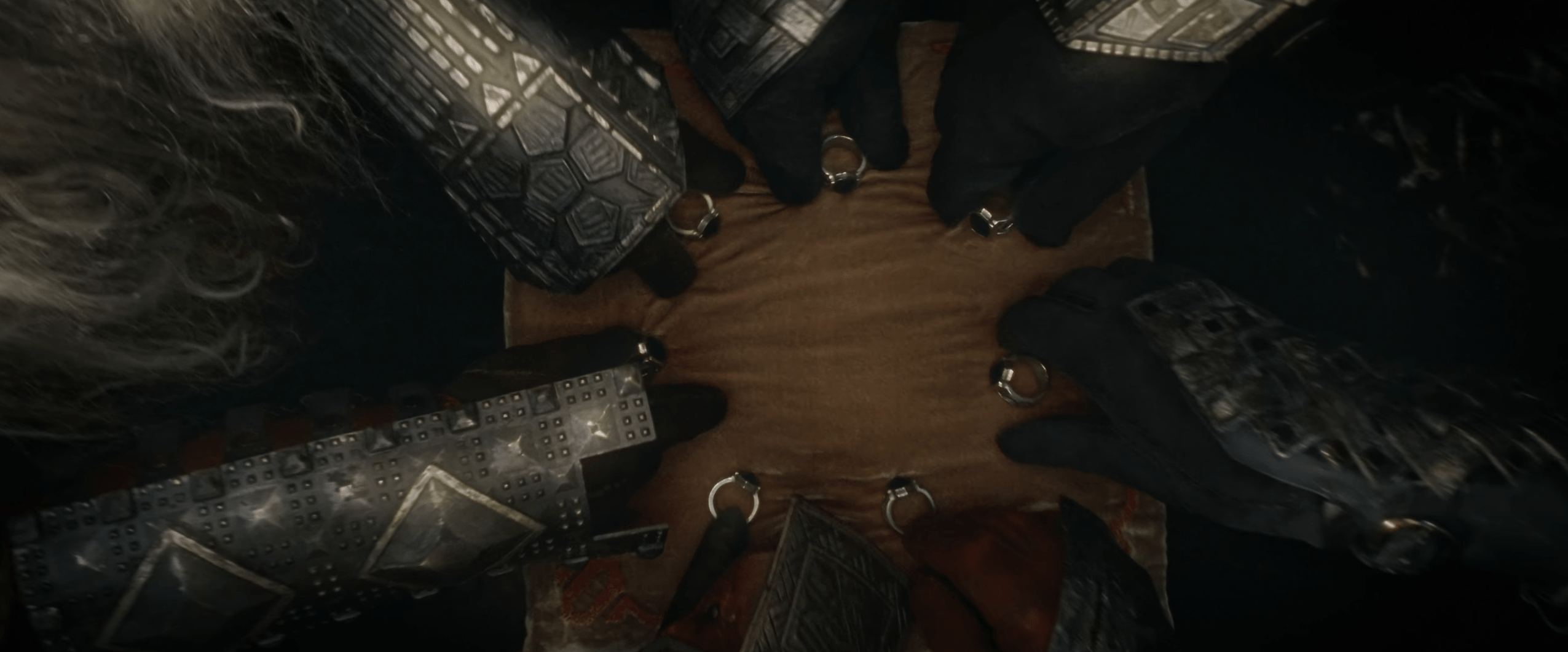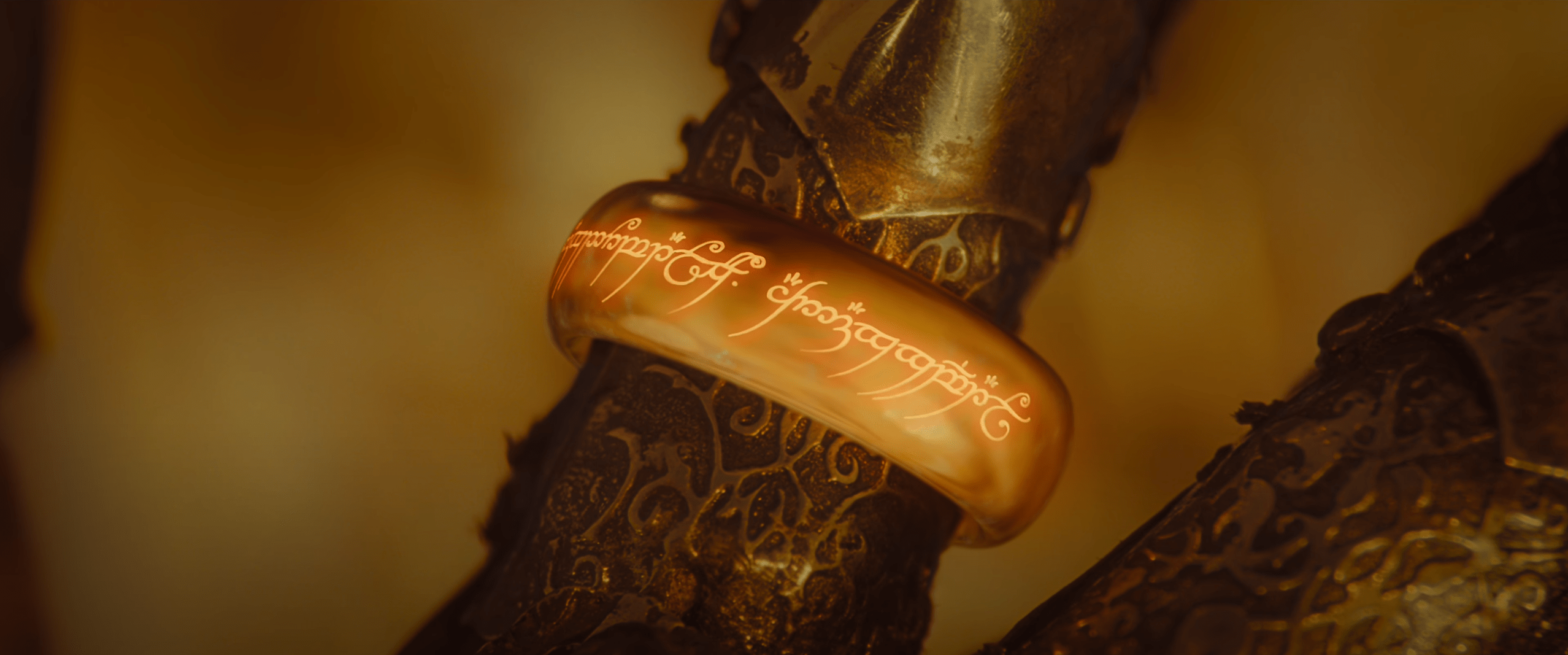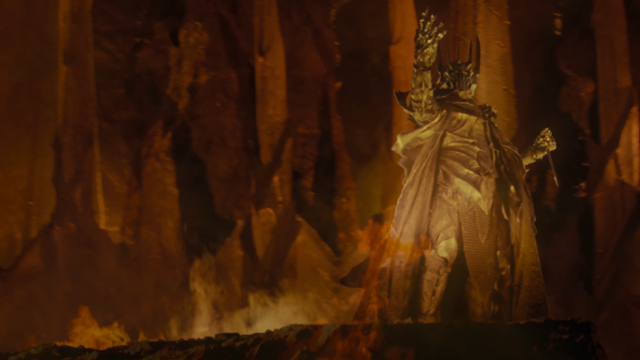After what’s felt like ages of waiting, Amazon revealed a little more about its plans for its Lord of the Rings prequel streaming series today, namely, its name: The Rings of Power. Sauron’s plans to ensorcell the Elves, Dwarves, and realms of Men with his magical trinkets has been at the heart of Tolkien’s universe forever, but before we get to what the new show will tell us… what do we know about the rings already?
As echoed in the voiceover for the title reveal today, based off Tolkien’s own verse, there were 19 rings that Sauron, under the guise of the benevolent entity Annatar, convinced Celebrimbor and the smiths of Eregion to forge for him. Three were given to the leaders of the Elves, seven to the Dwarf-lords, and nine to the rulers of Men. The 20th ring of power, the One Ring, was forged by Sauron himself, a greater ring of power to dominate the other 19 — but you knew that, of course. So what could these magical rings actually do? Read on!
The Elven Rings

The three rings gifted to the Elves are the only rings we actually know of by specific names: Narya, Nenya, and Vilya. Narya, the ring of fire, was gifted to Círdan, the lord of the Grey Havens, the port city that many Elves departed from Middle-earth to the Undying Lands. It’s fitting, then, that among its magical abilities were its powers to stave off the weariness of age, as well as inspire hope in people around the ringbearer — and perhaps even more fitting then that Círdan eventually gifted the ring to Gandalf, recognising that the wizard was actually one of the angelic Maiar, believing it better in his hands for the trials the world was about to face.
Nenya, the ring of water, was gifted to Lady Galadriel, who bore it to safeguard the forests of Lórien from incursion. While never explicitly specified, the ring — described as gleaming like a star so bright that only other ringbearers could see its true nature — was said to have powers of protection that sustained the forests around Lothlórien, keeping as much of the forces of darkness out as possible.
Lastly, Vilya, the ring of air, was gifted to Gil-Galad, the High King of the Ñoldor Elves. The most magically powerful of the three Elven rings, Vilya’s specific powers were unknown, beyond that Celebrimbor himself specified that all three rings had healing and preservative powers, unlike the other rings of power. After Gil-Galad died at the foot of Mount Doom in the Battle of the Last Alliance in the Second Age’s climax, Vilya was inherited by Elrond of Rivendell, who wore the ring until he passed into the Undying Lands at the end of the Third Age.
The Dwarf-Lord Rings

Much less is known specifically about the seven rings gifted to the Dwarves, other than they did not work on Dwarf-kind as Sauron had first intended, finding the Dwarves’ natural hardiness rendered them less capable of being mind controlled. The Dwarven rings all somehow had magical abilities that would help their bearers acquire vast wealth, and were used by the Lords to establish the grand treasure hordes of their peoples. But like the rings of power gifted to the Men, they also had secret negative traits — like their ability to guide the user to wealth eventually, transforming them into greed-addled hoarders.
By the climax of the Third Age, four of the seven rings had been destroyed, consumed by fire in the treasures of Dwarven kingdoms ravaged by dragons, with the remaining three re-acquired by Sauron.
The Rings of Men

The nine Rings of Men were arguably Sauron’s most effective. Initially, they granted their wielders great power: enhancing their strength, their ability to wield magic as powerful sorcerers, and extending their lives. But eventually the rings dominated the wills of their bearers, first inflicting them with visions of Sauron, before eventually draining their will until they were dominated by Sauron and transformed into wraiths — unperceivable spirits whose powers and existence became forever linked to Sauron’s own lifeforce, waxing and waning as the Dark Lord did.
What happened to the rings themselves after the nine became the Witch-King and his ringwraiths — Elrond assumes that they were re-acquired by Sauron by the time he forms the Fellowship in the final years of the Third Age, and when Sauron himself was destroyed with the destruction of the One Ring, the wraiths all dissipated. Given that the Elven rings simply lost their own magical abilities, if the nine rings survived Sauron’s destruction, it’s likely that they similarly too were de-powered.
The One Ring

Surely you know about this one already! The One Ring didn’t actually work quite so perfectly as Sauron intended: dubbed the Ruling Ring and empowered by much of Sauron’s own soul (forever binding his existence to the ring itself), it was originally meant to have the power to dominate the minds of the bearers of the 19 lesser rings of power. But whether or not it was actually powerful enough got fully tested. The first moment Sauron tried to wield the One Ring himself, the Elves ceased using the powers of their own rings, detecting his sinister presence and starting a great war between the Elven kingdoms and Sauron’s forces. The Dwarves, as previously mentioned, were inexplicably able to avoid being dominated by the Dark Lord. It was only really the nine ringbearers of Men who came to be dominated by Sauron’s powers, slowly but surely transforming into the Nazgûl.
Aside from the power of dominance, the One Ring granted Sauron increased martial strength, and could augment his, and any other bearer’s abilities and magical skills. We mostly know of its effects on the mortal races though, rather than its inherent abilities. The One Ring’s primordial connection to Sauron’s very soul made it an object of intense evil, capable of magically charming those in its presence with a desire to covet it for themselves, no matter the cost. As we saw frequently with Frodo and Bilbo when they came into possession of it, thousands of years after its forging, it could also turn mortal ringbearers “invisible” — actually shifting them into unseen realm of spirits that was otherwise only perceived by beings like the Ringwraiths who had faded into a similarly perpetual invisibility. Beyond that the One Ring was said to have all the powers of the other rings as well, including the Elven rings ability to slow the ageing process, hence why Bilbo himself aged much slower than your average 100+ year-old Hobbit.
When the One Ring was finally destroyed at the end of the Third Age, its passage from existence also rendered the powers of 19 lesser rings moot, turning them into simple trinkets.
